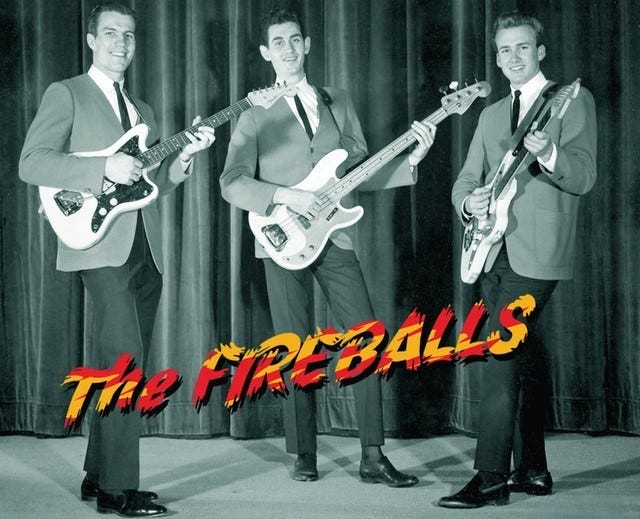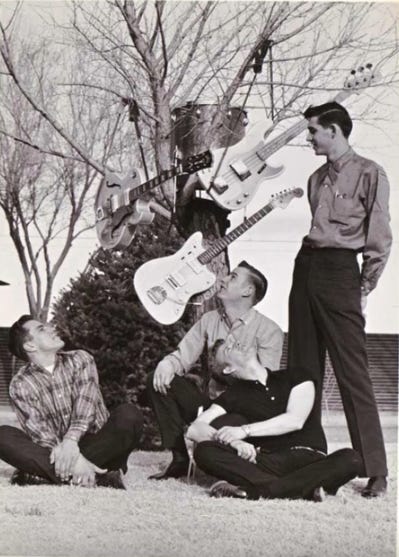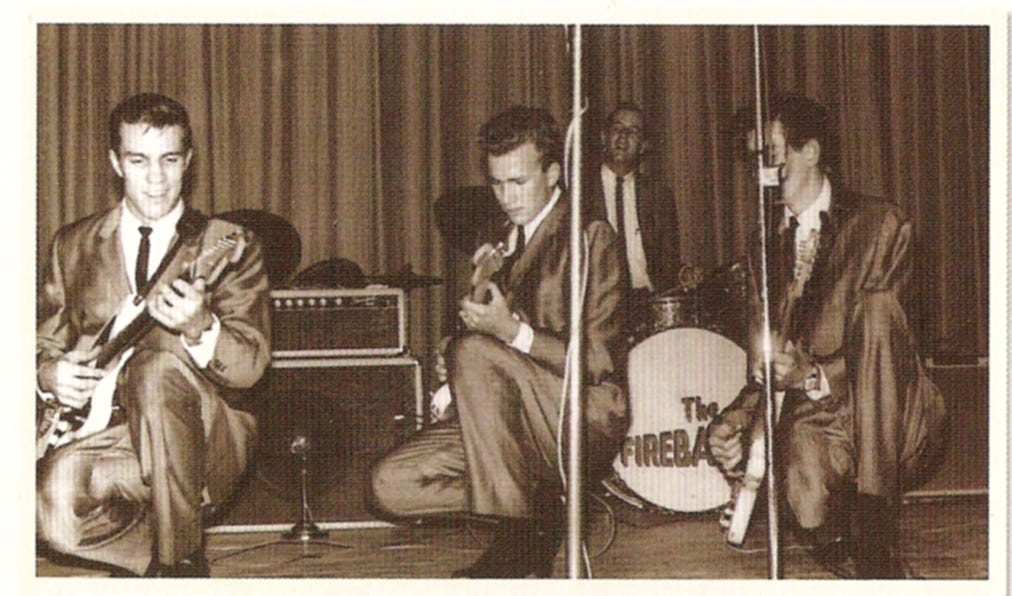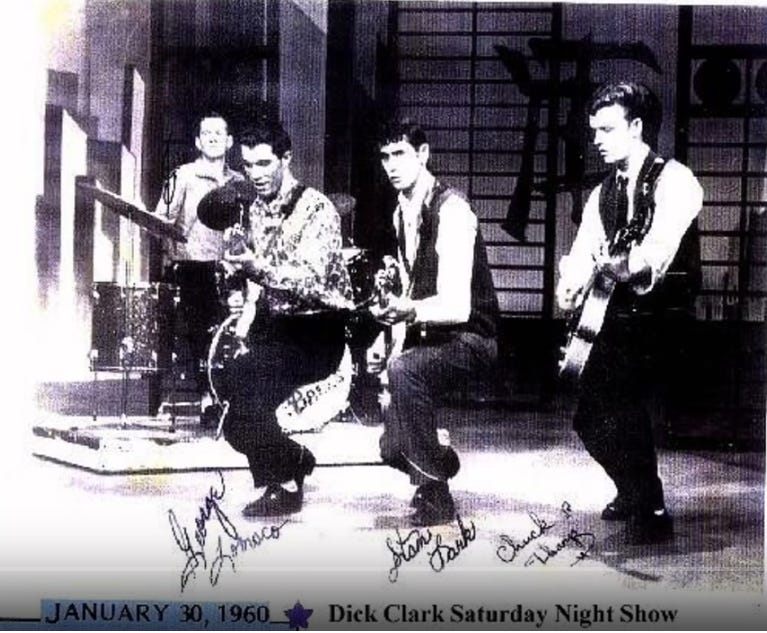Voice in the Wilderness
How George Tomsco’s Divine Inspiration Delivered Unto Us the Surf Guitar
George Tomsco may not be a household name, but the guitarist is an influential force who made profound, almost mystical impact. As leader of his New Mexico-based Fireballs, Tomsco wrought a wild new brand of six-string alchemy that immediately saturated American pop culture.
Prior to Dick Dale’s “Let’s Go Trippin,’” the Ventures’ “Walk Don’t Run,” and the Bel-Airs’ “Mr. Moto,” Tomsco definitively anticipated and codified a sound — the surf-rock instrumental — which had been percolating in the musical subconscious for a generation but was enshrined on wax for the first time by the Fireballs with their prophetic instrumentals “Fireball,” “Panic Button,” “Torquay” and “Bulldog.”
“I tag it as Southwestern guitar rock & roll,” Tomsco said. “It’s very, very basic. I’m not a riffer. I don’t eat the guitar up like Dick Dale. I’m a simple but melodic player. Simplicity can be so good.”
With “Torquay,” the Fireballs essentially delivered the surf blueprint from the middle of the sun-bleached Land of Enchantment in the summer of 1959. It’s an unlikely feat — the Fireballs hometown of Raton is more than a thousand miles from the nearest coastline, yet “Torquay” (originally and appropriately titled “Curious”) sounds exactly like the classic surf music that would find its regional Southern California audience two years later.
“I don’t know how to manufacture songs in my mind. I’d hear small pieces of something and then think to myself, ‘How can I play that on guitar?’” Tomsco said. “Here’s what I believe — creative thoughts are a gift from God. The Lord inspires lots of things and we don’t even know how that works.”
Tomsco’s musicality, whether instinctive or guided by a higher power, proved reliable. Their next single, “Bulldog,” was even more successful. While Link Wray and Duane Eddy had already introduced the muscular, solo guitar-driven rock instrumental, Tomsco significantly elevated the form — and did so without their influence. “Bulldog” is very close to the famed Duane twang but, as Tomsco explained, “I’d never heard Duane Eddy. In Raton, we had to drive out to the race track and wait for the sun to go down so we could tune in KOMA from Oklahoma City to hear some rock & roll. If ‘Bulldog’ sounds like Eddy, it’s coincidence.”
Tomsco’s entire musical existence seems colored by such propinquity. After witnessing, at age 9, a local duo perform Arthur Smith’s hot 1945 instrumental “Guitar Boogie” at a grade school assembly, his life changed. “I’d never seen an electric guitar before,” Tomsco said. “I thought it was so cool, I said, ‘Man, that’s for me!’”
His parents obliged and Tomsco, ax in hand, was on his way. In high school, he formed the Fireballs, who settled on their name at their first appearance, a 1958 PTA Talent Show where they covered current Jerry Lee Lewis hit “Great Balls of Fire.” Not long after, they lucked into their first session at the famed Clovis, New Mexico, studio of Buddy Holly producer Norman Petty via a brief telephone audition. They were launching singles into Billboard’s Top 40 from the get-go, and later, with singer Jimmy Gilmer, scored a number one smash with 1963’s “Sugar Shack.”
The band valiantly churned out a steady series of great pop-rock disks like “Come on, React” and “Bottle of Wine” (a recovery-themed top 10 hit, with Gilmer’s funky wino vox, in 1967) but the British Invasion monopoly and rise of psychedelia ultimately snuffed the Fireballs out.
But Tomsco’s innovative brand of Southwestern guitar rock ‘n’ roll simplicity directly influenced 15-year-old Paul Johnson, whose “Mr. Moto” as recorded by Johnson’s Bel-Airs, in tandem with Dick Dale’s pyrotechnic “Let’s Go Trippin,’” really cemented the California surf rock aesthetic in 1961.
The biggest twist in Tomsco’s saga of influence and innovation as a surf pioneer came in January 1960 when the Fireballs performed “Torquay” on the “Dick Clark Saturday Night Beech-Nut Show,” where Clark explicitly introduced them as “the surf band from New Mexico.”
“I asked the other guys ‘What did that mean?’” Tomsco said. “I thought he was describing another band. I’ve always wondered where Dick Clark got that, or how he came up with it. It’s beyond coincidence. It’s like it was planned, and we just put together the pieces of the puzzle.”
Amen, brother.
George Tomsco-Jonny Whiteside interview conducted 2016




Great, I'll forward this to George in Raton! Thanks